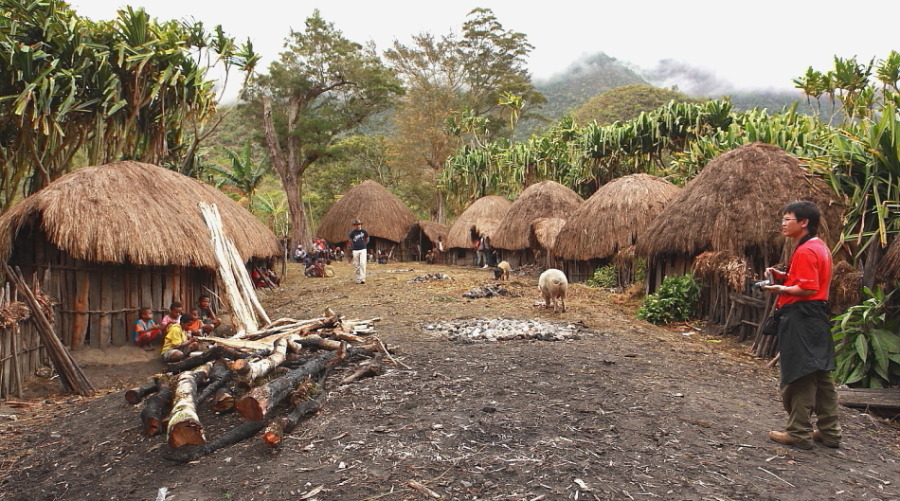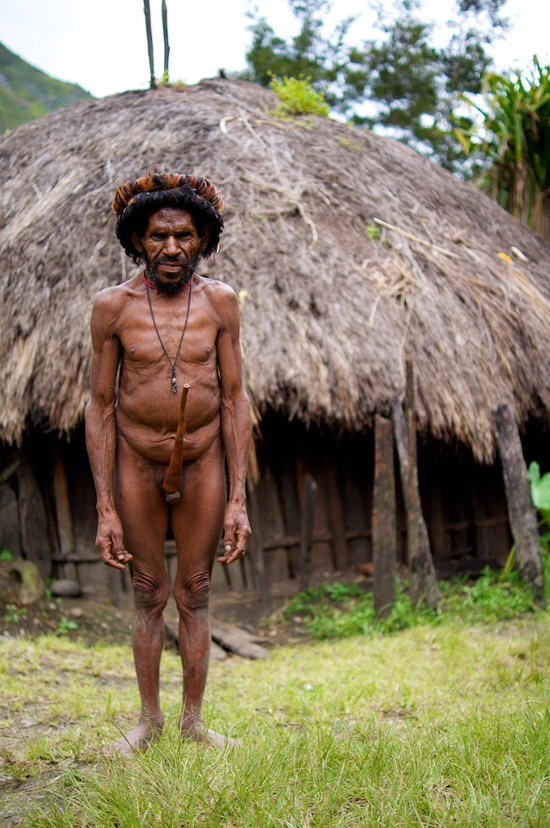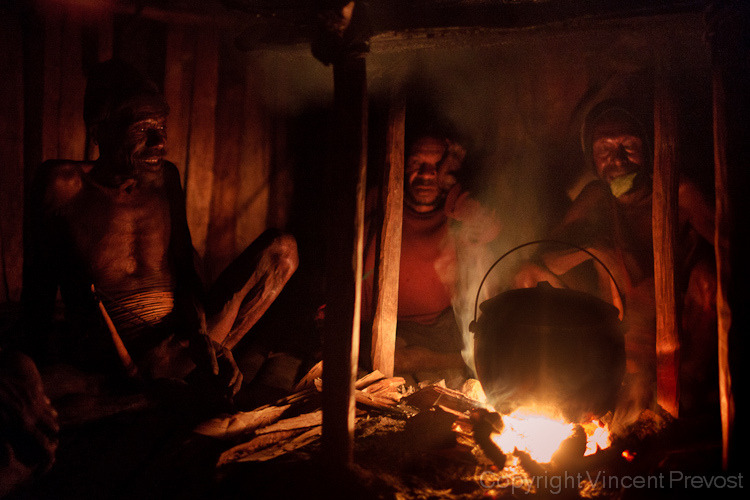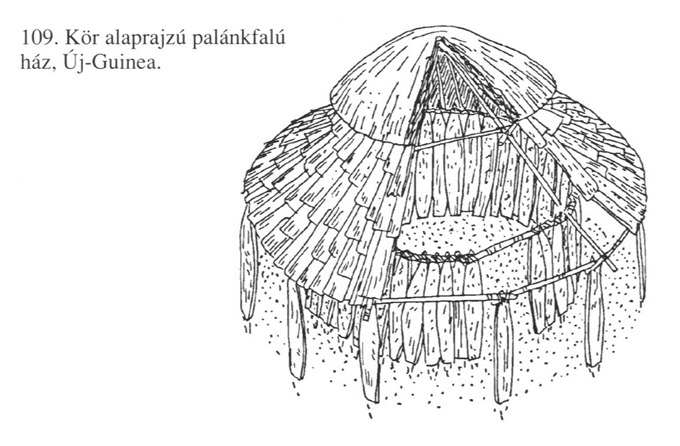V 39 |
Plank-walled house |
type |
|
place |
|
population |
The natural environment of the island of New Guinea, which lies off the north coast of Australia, is extremely varied. In the centre of the island, the New Guinea highlands are a desolate range of limestone hills, where the karst plateau is scarred by sinkholes, gorges, and valleys. In former times the ridges lining the valleys almost totally cut off the people dwelling in them, so that each valley has its own unique culture and language, unintelligible to the surrounding peoples. The island thus holds the record for the number of languages spoken per surface area: one-sixth of all languages spoken in the world are Papuan.
The average height above sea level of the plateau is 1300-1500 meters, producing a very unpleasant climate: despite the region being close to the equator frosts are frequent at dawn. In this mountainous terrain, with its harsh and unhealthy climate, slash and burn agriculture can only feed a small population. For this reason, and to withstand the grim climate the architecture of the New Guinean Highlands is economical. The local people make the smallest huts possible from wooden poles or straight tree branches tied together. The buildings are not only small in the floor plan but are also low in elevation, with tiny doorways.
Virtually the only building material used is the split tree branch or wooden stake. These are stood on end to form the walls, braced by thrusting their ends into the ground. The rough planks are bound at the top of the wall with a homespun rope to a thick horizontal stick. The frame of the roof is also made of similarly bound poles, which is covered with grass or quite often a layer of more rough planks.
Some of the natives of the New Guinean Highlands live in separate longhouses for men and women while others live in extended family groups in roundhouses, in a wide variety of living patterns. Both types of houses are of the kind of construction described above. They lack chimneys so that a distinctive feature of the villages in these valleys is the sight of their houses billowing smoke.








